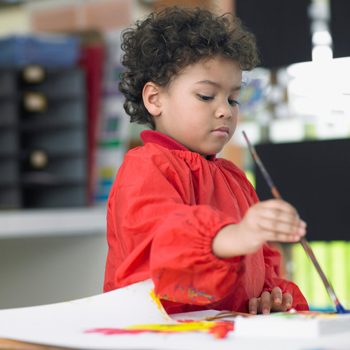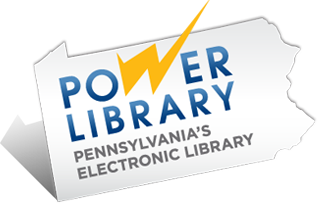
There are many ways to promote and encourage your child’s creativity at home. The good news is, you don’t need to call in HGTV to redesign your home to create an arts and crafts studio! Here are some ideas that can be done on a budget at the kitchen table or outside on the driveway or picnic table. Of course, if you do have the space and resources to create an art space at home go for it! Here are some aspects of learning and development that you may want to consider when gathering your art materials.
Process-Focused and Product-Focused Art
What is the difference? What does it mean for children? The National Association for the Education of Young Children (NAEYC) provides guidelines for understanding the differences in different types of art methods and explains what developmental skills you will be encouraging through these methods.
Process-focused art, simply put, is child-directed art. There are no samples, instructions, and no right or wrong way to create. The art is focused on the experience and on exploration of techniques, tools, and materials. The child makes their own choice as to what they are creating.
Product-focused art has a certain outcome in mind. There may be a sample provided, with instructions on how to complete the project.
Both types of art creation provide opportunities for increasing skills in the following developmental domains:
- Social and emotional: process art may naturally help children relax, focus, feel successful, and express their feelings. Product-focused art can accomplish this also if there is a laid back approach and the outcome is kept loose. Introduce a sample to spark an idea but encourage individuality and creativity in the final product.
- Language and literacy: through both types of art, children can discuss their art with an adult, and they may choose to add print to it. Adults can ask open-ended questions about the art such as, “Tell me about this picture; what made you decide to put that there…?”
- Cognitive: children can compare, predict, plan, and problem solve through both types of art. Product-focused art may also include following directions. Keep directions short, simple, and easy to follow for young children. Older children may enjoy challenging themselves with more complex projects.
- Physical: children use small motor skills to paint, write, glue, use clay, make collages, etc.
Both types of art creation have many benefits for your child. Here is a list of some items that you may already have in your home so you can start creating right away. Start saving those toilet paper rolls and cardboard boxes, and get ready for some fun! Don’t forget to visit your local dollar store where you can find many of these items and stock up for less!
Materials
- Common kitchen items: paper plates, pasta, Popsicle sticks, toothpicks, coffee filters, plastic wrap, foil, wax paper, straws
- Common art supplies: glue, scissors, paint (dot art, washable finger paint), yarn, thread, tissue paper, construction paper, writing paper, paint paper, markers, crayons, colored pencils, chalk, stencils, felt, foam pieces (letters, shapes, animals), beads, buttons, lacing string, clay, Play Doh
- Recycled items: toilet paper rolls, paper towel rolls, tissue boxes, shoe boxes, cardboard boxes, peanuts, bubble wrap, pool noodles
- Household tools: potato masher, spray bottle, sponges, toothbrush, paint roller, cotton balls
Books
ProjectKid : 100 Ingenious Crafts for Family Fun by Amanda Kingloff
This excursion into childhood’s dream world — where a spool with a ribbon remnant can become a balloon and cotton balls can make juice-box owls fly — is not a typical kids’ craft book. Kingloff tells parents the grocery store is “no longer about shopping for oatmeal and crackers,” but “about finding materials to make bongo drums or a miniature village.”
51 Things to Make with Paper Plates by Fiona Hayes
From pirate hats and cool cats, to robots and castles, unwanted paper plates are quickly transformed into marvelous creations. With step-by-step, easy-to-follow instructions, the 51 projects are all easy to make.
Mini Makers: Crafty Makes to Create With Your Kids by Laura Minter and Tia Williams
You don’t need to be an expert crafter or arty creative type to enjoy making things with your young children. Mini Makers will give you the ideas and inspiration to explore the hugely rewarding world of making and creating together. Paint, draw, print, cut, stick, sew, and bake your way through these many projects with your little helpers.
500 Kids Art Ideas: Inspiring Projects for Fostering Creativity and Self-Expression by Gavin Andrews
This fun, visual reference features a thousand arts and crafts projects for adults and children to do together. With an emphasis on recycled materials and nature, a wide range of art is covered.
Resources
Spotlight on Young Children and the Creative Arts edited by Derry Koralek. This NAEYC publication focuses on both understanding and doing creative arts with young children
— Recommended by Susan M., Youth Services Program Assistant

